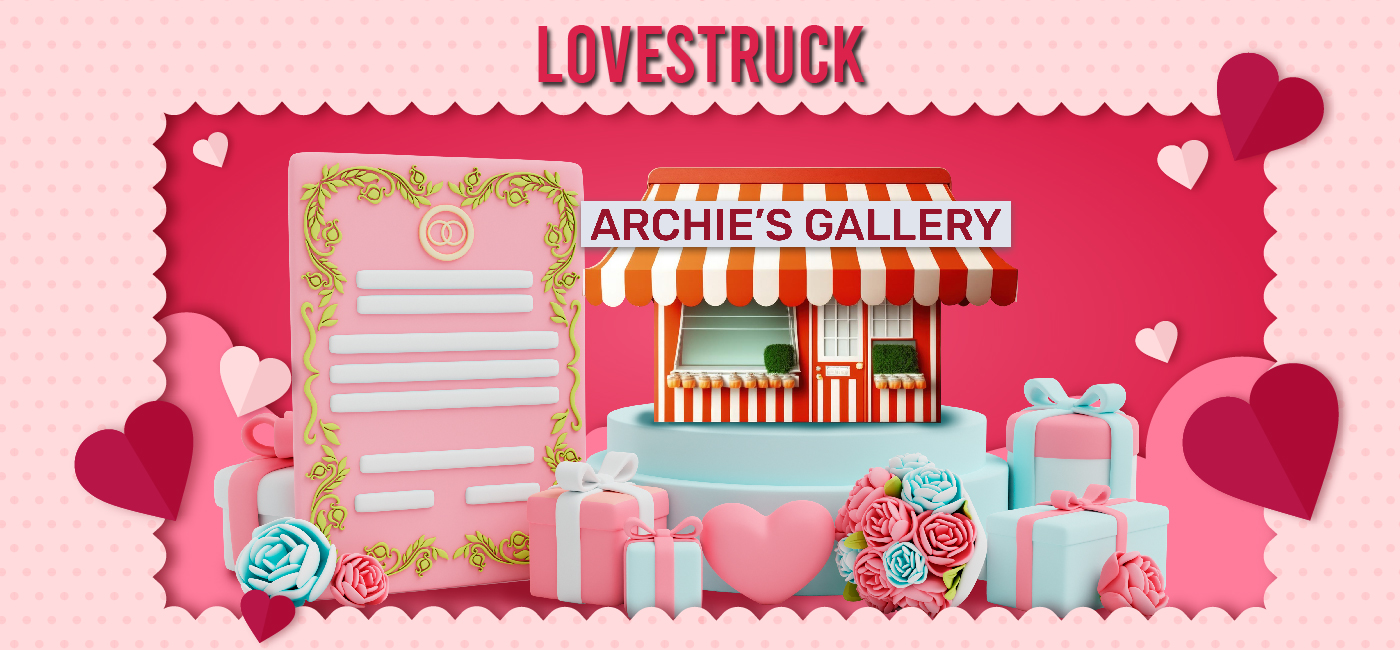Money can’t buy true love but can buy Valentine’s Day gifts. So much so that in 2023, Americans alone spent approximately $25.9 billion on the day, 8% more than the previous year, among the highest numbers recorded. The day is no longer just about romantic love. People also pamper their family members, teachers, friends, colleagues, pets, etc.
Want to know how Valentine’s Day celebrations evolved into the Gifting Extravaganza of today? Read on

Roots in Ancient Rome
Valentine’s Day originated during the ancient Roman festival, Lupercalia, that celebrated spring and love.
People believe it’s dedicated to the 3rd-century martyred Roman St Valentine, who secretly married young couples when King Claudius had banned marriage in the empire.
In the Middle Ages, February 14th blossomed into a day to express love with handwritten notes.
England was celebrating by exchanging flowers, sweets, and love notes by the 18th century.

The 19th Century Boom
The tradition crossed borders. In 1913, Hallmark flew in like Cupid in the US and, by 1916, replaced handwritten notes with mass-produced cards and chocolates, making Valentine’s Day a major consumer event.
Globalization spread love (and profit), and people celebrated with fancy dinners, extravagant gifts, and themed vacations. From ancient rituals to modern-day market forces, tradition made way for commercialization.

India: Lovestruck in the 80s
The love bug bit India, with the young gen losing itself in Archie’s Gallery’s alleys of greeting cards, teddy bears, keychains, and stuffed toys when it opened in 1979. Archie’s made India modern, hip, and global.
Valentine’s Day greeting cards were launched in 1984-85 and became an instant hit, only getting bigger and better thereon.

The Era of Romance
The 90s was the decade of economic freedom and a growing middle class with an increasing disposable income.
Cable and satellite TV filled our living rooms with the romance of Hollywood flicks like Pretty Woman and Notting Hill and tunes like Nothing’s Gonna Change My Love for You and Everything I Do, as Indipop’s Chhui Mui Si Tum and Valentine’s Day Ke Din Main chimed in.

Valentine Week
As the wonder years of the ’90s changed how we celebrated Valentine’s Day, businesses saw an opportunity and turned the Valentine’s celebrations into a week-long affair.
7 Feb – Rose Day: Express affection with roses.
8 Feb – Propose Day: Pop the question or express your feelings openly.
9 Feb – Chocolate Day: Indulge in sweet treats to symbolize care and joy.
10 Feb – Teddy Day: Gift cuddly bears representing warmth and comfort.
11 Feb – Promise Day: Make commitments and solidify bonds.
12 Feb – Hug Day: Share affection and emotional connection through hugs.
13 Feb – Kiss Day: Seal your love with a kiss.
14 Feb – Valentine’s Day: Celebrate love in all its forms

The Business of Love
Guess what the week-long celebrations mean for the commercial side of love? The market size of ₹1,200 crore in 2007 grew to a whopping ₹18,000 crore in 2015.
In 2023, Indians spent an estimated ₹30,000 crore on Valentine’s Day. Pampering sessions at spas, luxury brands, and tech brands made the business of love go beyond cards, chocolates, and jewelry.

From Generic to Personalized Gifts
What would make one feel more special? A one-size-fits-all gift or a customized experience? Your guess is as good as ours.
The desire to feel extraordinary has fueled the boom of platforms like IGP, Ferns N Petals, OyeGifts, etc., offering customized jewelry, couple portraits, and so on.

Experiences Take Center Stage
Loved-up couples started going beyond exchanging generic gifts. They increasingly seek memorable shared experiences.
Cooking classes by Cookify or Airbnb Experiences, adventure trips by Thrillophilia and MakeMyTrip, and spa packages by The Spa, Four Seasons offer such unique experiences.

No Love Like Self-Love
Valentine’s Day is no longer just for couples or loved ones. Celebrating singlehood and practicing self-love is the new romance.
Bath bombs (Bath & Body Works), subscriptions to wellness services (Headspace, Calm), or solo travel packages cater to this growing segment.

The Love (Money) Effect
The Day of Love brings in big bucks in the global and Indian markets, boosting various sectors:
Retail: Jewelry, flowers, chocolates, cards, and apparel sell big.
Hospitality: Candlelit dinners at restaurants, hotel discounts, and travel companies offering special packages and experiences shoot up bookings.
Greeting Cards & Gifts: Greeting card companies see peak sales, especially in personalized gifts.
Entertainment: Movies, concerts, and events for couples witness more demand.

Flowers In Demand
As the flower industry turns more fragrant, with ₹500 crore worth of business around Valentine’s Day, personalized gifts and gift hampers see an incredible 100% market growth!
70% of the revenue comes from online businesses for players like Ferns N Petals, Flower Aura, Archie’s, etc.

The Valentine Effect
A theory suggests the happy feeling on Valentine’s Day makes people buy stocks as they are more optimistic. Globally, this trend is called the Valentine Effect. Some experts believe the reason could be an increase in demand for celebratory products and services during the period.
Greeting cards, flower companies, or jewelry retailers see higher sales. A leading floral exporter, Soex Flora Pvt. Ltd, for example, states their market surged to ₹231.7 billion in 2022 and is projected to reach ₹460.6 billion by 2028, reflecting a promising 13.1% compound annual growth rate.

Tier II and Tier III Are Celebrating
The celebration of love is getting bigger and brighter in India. And it’s not just Tier 1 cities that are celebrating. Tier 2 and Tier 3 cities and towns are looking for experiential elements, too.
Consider this: the largest gifting brand, Ferns N Petals, expects a 50% increase in demand from these regions.
Or take Archie’s example. Their business grew approximately 40% from ₹5413.90 lakhs in FY 2020-21 to ₹ 7553.24 in FY22.

In The Future
While traditional gifts are here to stay, the future is all about personalization, experiences, and self-love. Think romantic getaways instead of bouquets, engraved jewelry instead of cards, and pampering treats for singles besides couple gifts.
The Gifting market, already worth ₹2500 bn, will be fueled further by rising incomes, tech-savvy consumers, and changing social norms.
It’s not just a day for romance anymore – it’s a consumption story that’s only getting bigger!
How useful was this post?
Click on a star to rate it!
Average rating 4.6 / 5. Vote count: 18
No votes so far! Be the first to rate this post.
I’m Archana R. Chettiar, an experienced content creator with
an affinity for writing on personal finance and other financial content. I
love to write on equity investing, retirement, managing money, and more.
-
Archana Chettiarhttps://www.equentis.com/blog/author/archana/
-
Archana Chettiarhttps://www.equentis.com/blog/author/archana/
-
Archana Chettiarhttps://www.equentis.com/blog/author/archana/
-
Archana Chettiarhttps://www.equentis.com/blog/author/archana/

